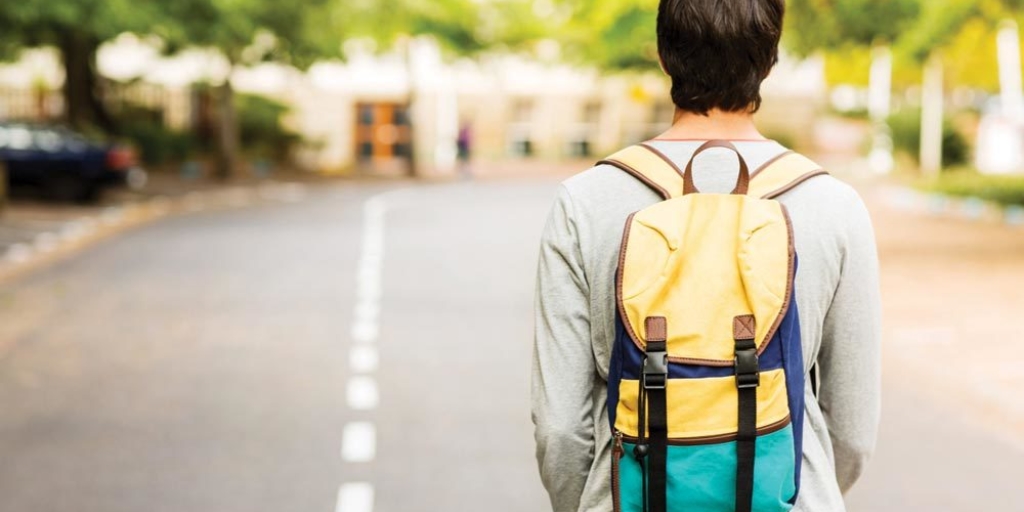National School Backpack Awareness Day

College and high school students expect academics to be challenging, but one of the most common practices among students can literally become a pain in the back. National School Backpack Awareness Day is set for September 26th this year, to bring attention to the serious damage that carrying a heavy backpack can cause. Students often fail to realize that theirs is a common problem and that there are steps they can take to reduce their risks. The concern isn’t simply a matter of the pain backpacks cause now; it’s the lasting damage to nerves, muscles, and the skeleton.
Damage from Heavy Backpacks
Common complaints from students include discomfort or pain in areas from the neck and shoulders down to the lower back. Most backpacks have straps across the shoulders that place a lot of pressure on the soft tissue there. Repeatedly wearing the backpack can result in minor to significant damage to the nerves. When damage occurs, it can result in the student not being able to use their muscles and limiting their use of their hands and fingers.
Backpacks that aren’t worn properly cause the wearer to slump forward. As the body works to compensate for the load, the shoulders become rounded. The weight causes the natural curves in the spine to become distorted, also putting strain on the muscles, joints of the spine, and the ribs. Some experts believe backpack use puts students at a substantial risk of developing serious conditions like functional scoliosis, early arthritis, and chronic back pain.
A lot of the concern about backpack wear is on students in primary and secondary grades. Students are growing and developing during these ages, making the risk of permanent damage even greater. Even so, college-aged students are showing up at medical clinics at an increasing rate, complaining of back pain. They tend to carry larger, heavier loads for greater distances than kids who are still in elementary or high school.
Tips That Make Wearing a Backpack Safer
- Start with your class schedule. Many students try to get their classes “bunched together” so they can get classwork out of the way and have more free time. The more classes you have to go to when you leave your room, the more books you have to carry. Try to reduce the load by spreading your coursework out.
- Limit the weight of your backpack to no more than 15% of your body weight. Women often have more problems with back pain than men, so reducing the weight to 12% of their body weight is even better. They should also consider getting women-specific backpacks to accommodate their shorter torso length and shape.
- Take empty water bottles or an empty drink cup. Fill it up from a water fountain before you go to class and then pour out what you don’t drink. Keep in mind that you can add a pound or more for every full water bottle you carry.
- Find out if there are lockers available on campus.
- See if your textbooks can be accessed on an e-reader. Even if you only have the option to use reference books on an e-reader, that can save you from carrying a lot of weight.
- Don’t take things you don’t need. This tip might seem like a “no-brainer” but it’s easy to forget about things you might have thrown in last week and left there. Clean your backpack out regularly and get rid of unnecessary weight.
How to Choose and Wear a Backpack
Modern messenger bags have become popular, but they only add to the problem of painful backs and shoulders. These bags are made to wear over one shoulder, putting more stress on one side and on the back to balance the weight. Students should choose a style with two straps and wear both straps at all times.
The ideal backpack is:
- Small, to prevent the urge to overload
- Lightweight
- Made with various sized compartments rather than one open compartment
- Designed to hold heavier items like laptops in the center, next to the back
- Has chest, waist, or hip straps/pads to distribute more of the weight to areas of the body that can accommodate it
- Made with wide (3 inches or more) straps that curve out from the neck and have significant shoulder padding
Backpacks need to fit well, too. The shoulder straps should be adjusted to make the backpack fit high on the back so that the bag doesn’t extend past the waist. The straps may need to be adjusted to accommodate different clothing, such as when adding a jacket. If the backpack shifts from side-to-side while walking, it needs to be adjusted. A backpack with a chest strap helps hold the bag in place. Backpacks can cause back pain, pain in the shoulders, and headaches. Taking care of the little things can help prevent larger problems in the future.If you need immediate care, stop by your local TrustCare Express Medical Clinic. Our trusted medical team offers a comprehensive array of medical services at multiple locations throughout Central Mississippi. Get the care you need to feel better faster.
